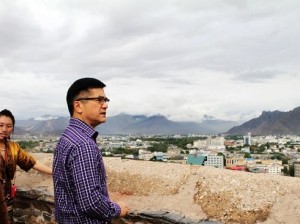Over 4,500 Tibetans gathered near Naglha Zamba in the Driru region of eastern Tibet last month as Chinese mining activities there sparked a massive protest. Naglha Zamba is a sacred hill and a prominent pilgrimage site in the region, while being rich in mineral resources.
The protest was triggered when a Chinese company arrived at Naglha Zamba to start work. The authorities tried to win over the protesters by telling them the project would bring development and other benefits to the region. “Actually they were there to mine minerals” one of the locals said.
The Chinese authorities deployed over 50 military convoys at the protest side, giving rise to what the exile Tibetan government based in Dharamshala described a “tense” situation. The government feared that the development might trigger clashes between the Tibetans and the Chinese security forces.
Three Tibetans were reportedly killed by a landslide while on the way to the protest site.
Mining operations in Tibet have led to frequent standoffs with Tibetans accusing Chinese mining companies of disrupting sites of spiritual significance, and polluting the environment. Similar cases were reported in August last year in the Markham region of eastern Tibet, when a Tibetan man was shot dead for taking part in an anti-mining protest. Security personnel there responded to a crowd of thousands of protesters by firing tear gas and live ammunition, and arresting six men.
In March this year, 83 miners were killed by a landslide at Gyama Mine near Lhasa.
According to China’s official statistics, the Tibetan plateau has China’s largest chromium and copper reserves with most of its rich iron, gold, silver, potassium, oil, and natural gas reserves unexploited.
Mining projects in Tibet are planned and implemented without consultation, consent or the knowledge of local Tibetans. The Central Tibetan Administration has continuously argued that Beijing should stop such activities and give priority to the Tibetans who live there, and who are becoming marginalised by Chinese “development” undertakings.





 Print
Print Email
Email